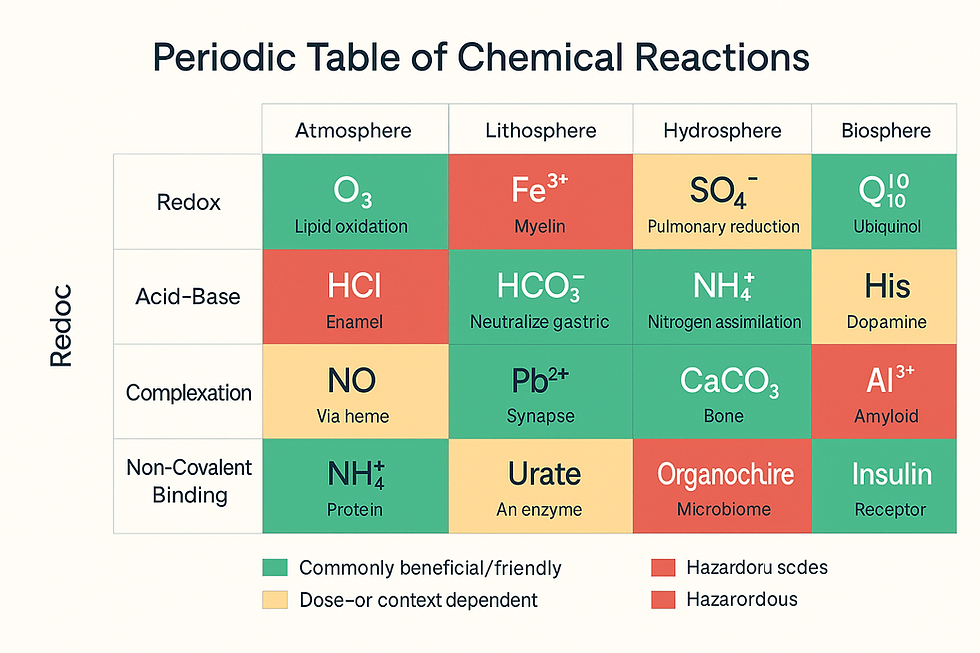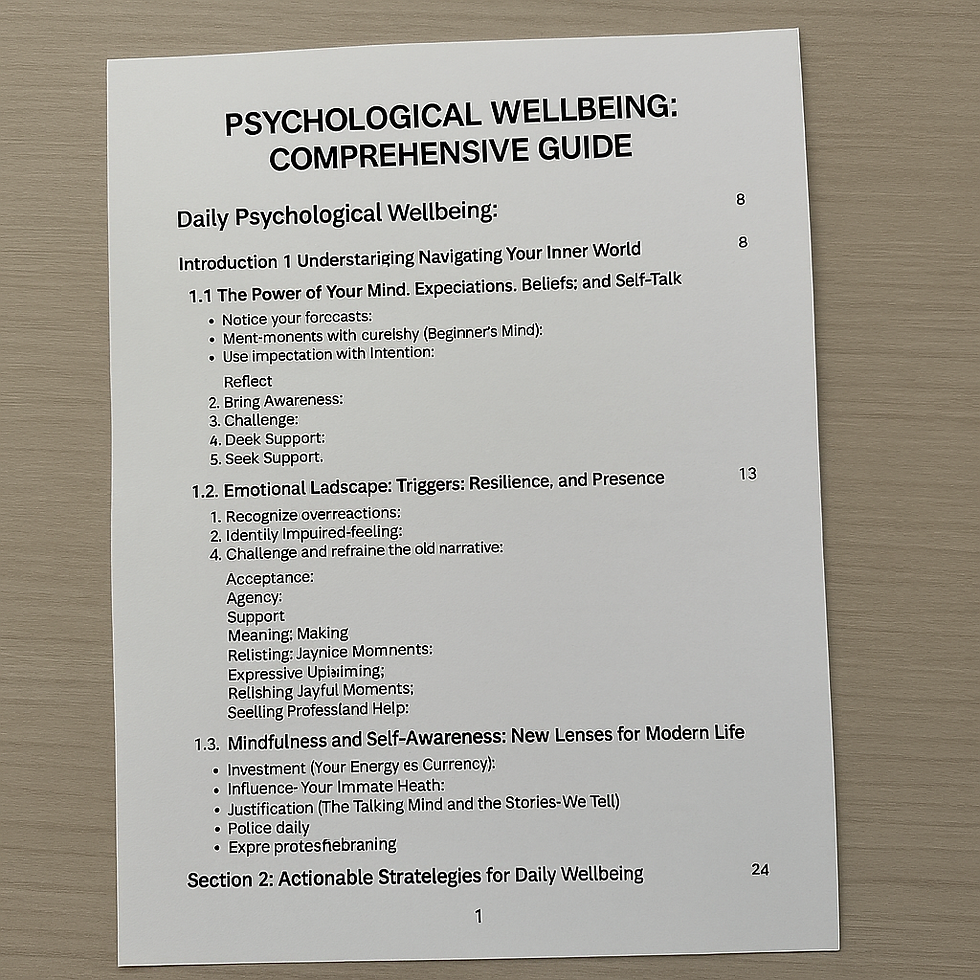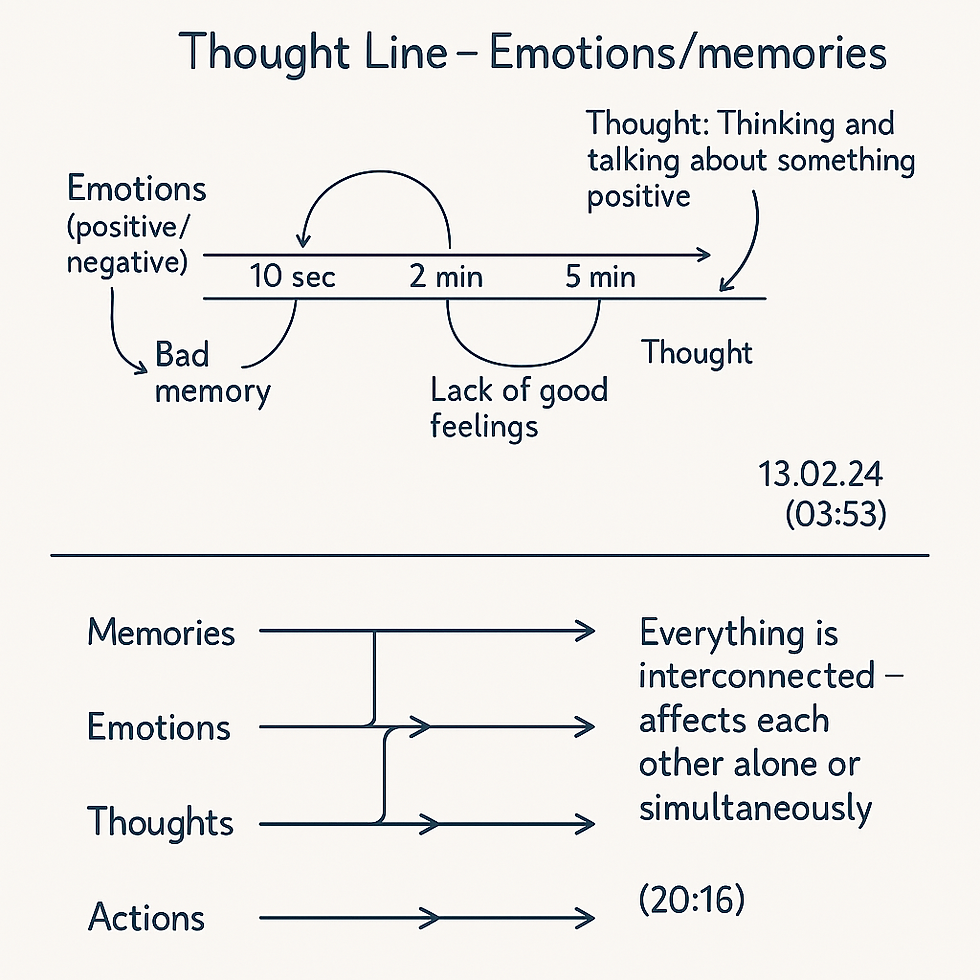The creation of a mindset and the behavioral pattern of man.
- David B. N. J. & "A.I."
- Apr 6, 2024
- 5 min read
Updated: Jun 7
Download the document here:
Listen to a podcast about the paper here:
Summary:
Part 1: The Foundation for Human Thought and Behavior
Main themes and keywords:
Theory of Human Mind: Explores the development of human thought and behavior patterns. Focuses on how we act, behave, and how life experiences affect our external (action) and internal (thought processes) behaviour.
Life cycle: Discusses human life from birth to adulthood, and how both external and internal influences are shaped through interactions with the outside world.
Birth and early development: Influence from biological inheritance and environment, the importance of early experiences.
Childhood: The role of school, friendship, and leisure activities in shaping our identity.
Adolescence: Identity development, the balance between peer influence and independence.
Adult life: Integration of previous experiences, adult challenges such as marriage and career.
Patterns of Behavior: Discussion of human behavior as a mixture of chance and choice, driven by an interaction between external circumstances and internal states.
Self-Development and Growth: Explores how adulthood is a time for reflection, choice, and influencing our future paths with awareness and purpose.
External Influences vs. Internal Influences:
External: Environment, social circles, societal challenges.
Inner: Thoughts, memories, current thinking, feelings, and mood.
Examples of behavioral patterns:
Random behavior: Impulse decisions based on sudden desires.
Selective behavior: Conscious choices based on interests and long-term goals.
Conclusion and Reflection: Encourages recognition and understanding of the dynamic between predestination and free will to uncover human behavior. Discusses the importance of appreciating human development and unique life stories.
Core message: Human behavior and mindset are the product of a continuous interaction between internal and external influences throughout life. By understanding these dynamics, we can navigate life's challenges with greater flexibility and awareness.
Part 2: Influences and the Dynamics of Human Behavior
Main themes and keywords:
Behavioral States in the Present Situation: Explores how different situations and times affect human behavior, from hysterical joy to reflective melancholy. Discusses how internal and external factors, such as time of day and personal experiences, contribute to behavioral changes.
Measurable Behavior and Its Impact: Analyzes how behavior can be measured through digital data (such as social media engagement rates) and how individual behavior affects the environment. Uses Elon Musk as an example of how public figures can influence society through their actions and statements in the media.
Levels of Behavior: Describes the spectrum of human behavior, from passive to highly active states, and how these levels reflect personal growth and social adjustment. Also discusses how information and self-discovery can lead to changes in behavioral patterns.
Mood Indicators as Behavior and Decision Indicators: Focuses on how mood can act as an indicator of general state and influence choices and behaviour. Introduces a scale for mood indicators and discusses limitations and variations in human mood states.
Core message:
The interaction between internal and external influences: It is emphasized how our behavioral states and decisions are more deeply rooted in an interaction between how we internally process our surroundings and the external stimuli we receive. This interaction shapes our perception and reaction to the world around us.
The Dynamics of Human Behavior: Discusses the complexity of human behavior as not only a response to immediate stimuli, but also as the result of a layered set of internal beliefs, emotions, and past experiences. This understanding opens up a deeper insight into why people act the way they do and how we can approach self-development and social interaction with greater empathy and awareness.
The Importance of Self-Awareness: By understanding and acknowledging our own behavior levels and mood indicators, we can better navigate our personal and professional lives. This involves a continuous process of self-reflection and self-discovery that allows the individual to develop a more meaningful and authentic existence.
Part 3: Decision Making and Internal Influences
Main themes and keywords:
Decision Making: Dives into the complexity behind human decision-making processes. Describes how both conscious and unconscious factors, including personal experiences, social influences, and cultural norms, shape our choices and actions.
Basis for Choice: Explores the various reasons why people make the choices they do, from genetic predispositions to influences from upbringing and external stimuli. Shows how individual preferences and social norms guide our daily decisions.
Visual and Visible Indicators of Choice: Analyzes how visual content, such as film and social media, can influence decision-making processes by shaping perceptions and desires. Discusses the importance of visual and media influence in modern society.
Events as Triggers for Decisions: Shows how specific events can trigger decision-making processes, illustrated through examples such as interactions between individuals and their choices related to consumption and preferences.
The Variations of Choice: Presents a spectrum of decision types, from everyday choices to life-changing decisions. Discusses how these choices are woven into our personal and social lives, and how they reflect our deeper values and goals.
Core message:
The Complexity of Human Decision Making: Decisions are rarely black and white and are often the result of a complex mix of internal desires and external influences. Understanding this process is essential to navigating life's challenges and opportunities with awareness and purpose.
The Influence of External and Internal Factors: This segment highlights how our decisions are deeply influenced by a combination of personal experiences, upbringing, cultural norms, and immediate situations. It highlights the importance of being aware of these influences in order to make more informed and authentic choices.
Self-awareness and Self-discovery: Through exploring our own decision-making mechanisms we can achieve greater self-awareness and self-understanding. This lays the foundation for personal growth and development, and helps us live a life that is in line with our innermost values and goals.
The document "The Creation of a Mindset and its Pattern of Behavior" is an in-depth exploration of the psychological and social mechanisms that shape human behavior and thought. Here is a summary of the ten main parts of the document, presented with key words and main points:
Part I: The Foundation for Behavior and Thought
The Sequence of Human Behavior : Explores the development of behavioral patterns, stimulated by both internal and external factors.
Basic Stimuli : Discusses the human response to basic stimuli and the eternal search for more complex experiences.
Recognizable Emotions : Looks at how basic emotions affect our reactions and behaviour.
The Mind and Its Processes : Provides insight into the basic processes that take place in the human mind, from thoughts to emotions.
Part II: Influences and Behavioral Dynamics
Behavioral states : Analyzes how different situations influence our behaviour.
Measurable Behavior : Examines how behavior can be measured and its effects on the environment.
Behavioral levels : Describes different levels of behavior, from passive to active states.
Mood Indicators : Looks at how moods work as indicators of behavior and decisions.
Part III: Decision Making and Internal Influences
Decision Making : Explores the processes and mechanisms behind how we make decisions.
External influences on the inner : Discusses how external factors such as environment and society affect our inner thoughts and feelings.
Temptations : Looks at how temptations affect our choices and self-control.
The Catalog of Availability : Explores how the availability of resources and options guides our choices.
Parts IV to X
These sections delve deeper into specific aspects of human behavior and thought processes, including complex thought processes, self-awareness, personal development, deeper psychological mechanisms, human interaction, social dynamics, nature, evolution, instincts, interpersonal relationships, self-awareness, and emotional dynamics.
Keywords for the entire document include human behavior, thought processes, stimuli, emotions, decision-making, affects, self-awareness, personal development, social dynamics, and emotional intelligence.
This summary provides an overview of the document's content, aimed at understanding the complex mechanisms that govern human behavior and thinking.
A theory of DBNJ, further developed and written by Ai.





Comments